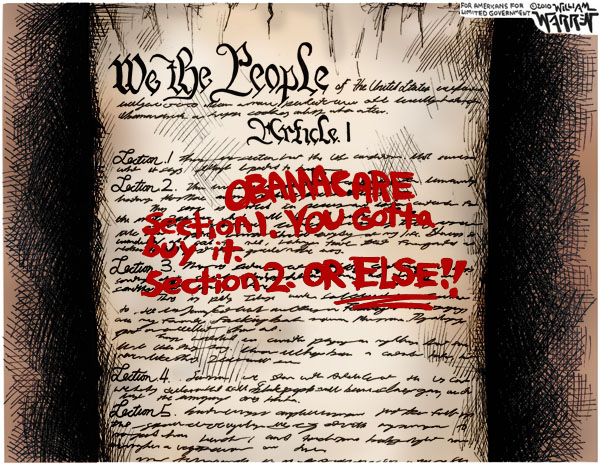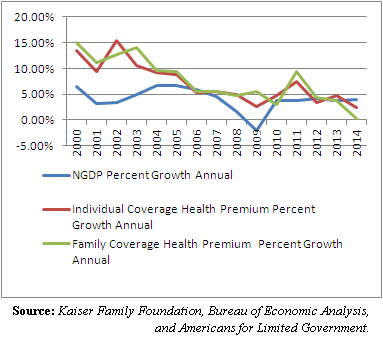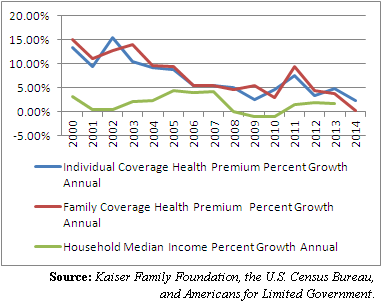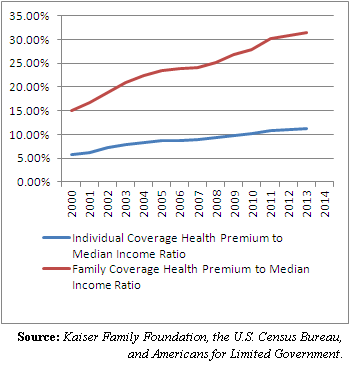“[R]eform will finally bring skyrocketing health care costs under control, which will mean real savings for families, businesses and our government.”
That was President Barack Obama writing an oped in the New York Times on August 15, 2009 entitled, “Why we need health care reform.”
Here, Obama made two key propositions: 1) That health care costs were skyrocketing at the time he took office; and 2) that enacting his proposed health care law would bring the costs of premiums “under control.”
This was the entire premise for Obamacare. And it was based on a lie.
Based upon an analysis of data compiled by the Kaiser Family Foundation from 1999 to 2014, two unmistakable facts emerge.
First, the annual growth rate of both individual and family health premiums was already trending downward before Obama ever took the oath of office.
Individual health premium costs were increasing at 15.4 percent in 2002, but they sloped downward all decade such that by 2009, the annual growth rate was just 2.55 percent as the working age population slowed, and the economy and incomes crashed. For family health premiums, those grew in 2000 at 15 percent but by 2010, the growth rate was down to 2.95 percent.
Second, despite the downward trend in the growth rates of insurance premiums up until that point, as a share of household median income, premiums have been rising since 2000 — and Obamacare has done nothing to alter the trend.
In 2000, a family plan cost 15 cents for every dollar of median income earned. In 2009, it was 27 cents for every dollar earned. In 2013, post-Obamacare, it was up to 31-and-a-half cents per dollar earned.
In fact, in 2011, the year the minimal coverage requirements under the law began to be implemented, the problem was exacerbated.
That year, premiums for individuals and families jumped, 7.5 percent and 9.5 percent, respectively. As a result, the cost for family health premiums increased, from 28 cents per dollar of median income, to 30 cents.
Since then, building off the new, post-Obamacare baseline, the growth rates of premiums have more or less reverted to the historical downward trend seen in the past several years, according to Kaiser.
Two key points emerge. First, Obama can really take no credit for the overall downward trend of the growth rates of annual premiums. They were going to slow down anyway, Obamacare or no.
Second, that the real culprits for the continued, growing unaffordability of health premiums — and everything else like home values or a college education — are slower economic growth, slower population growth, and the slower growth in incomes that both bring. In fact, these have been trending downward along with job creation, interest rates, and inflation for a generation.
The health care law will do nothing to address those issues. Instead, it attempts to mask the cost of premiums for some through a massive infusion of subsidies — not to individuals, but to insurers.
At least prior to 2010, American families had an alternative to spitting out nearly a third of household income to pay for insurance premiums; but with Obamacare’s individual mandate, they have no choice.
They can purchase the more expensive plans the law creates, or they can pay a fine.
Prior to the law’s passage, families could make those types of decisions in more of a market-based environment. Now, with the law, they are forced pay for the consequences of Obama’s big lie.
Robert Romano is the senior editor of Americans for Limited Government.










